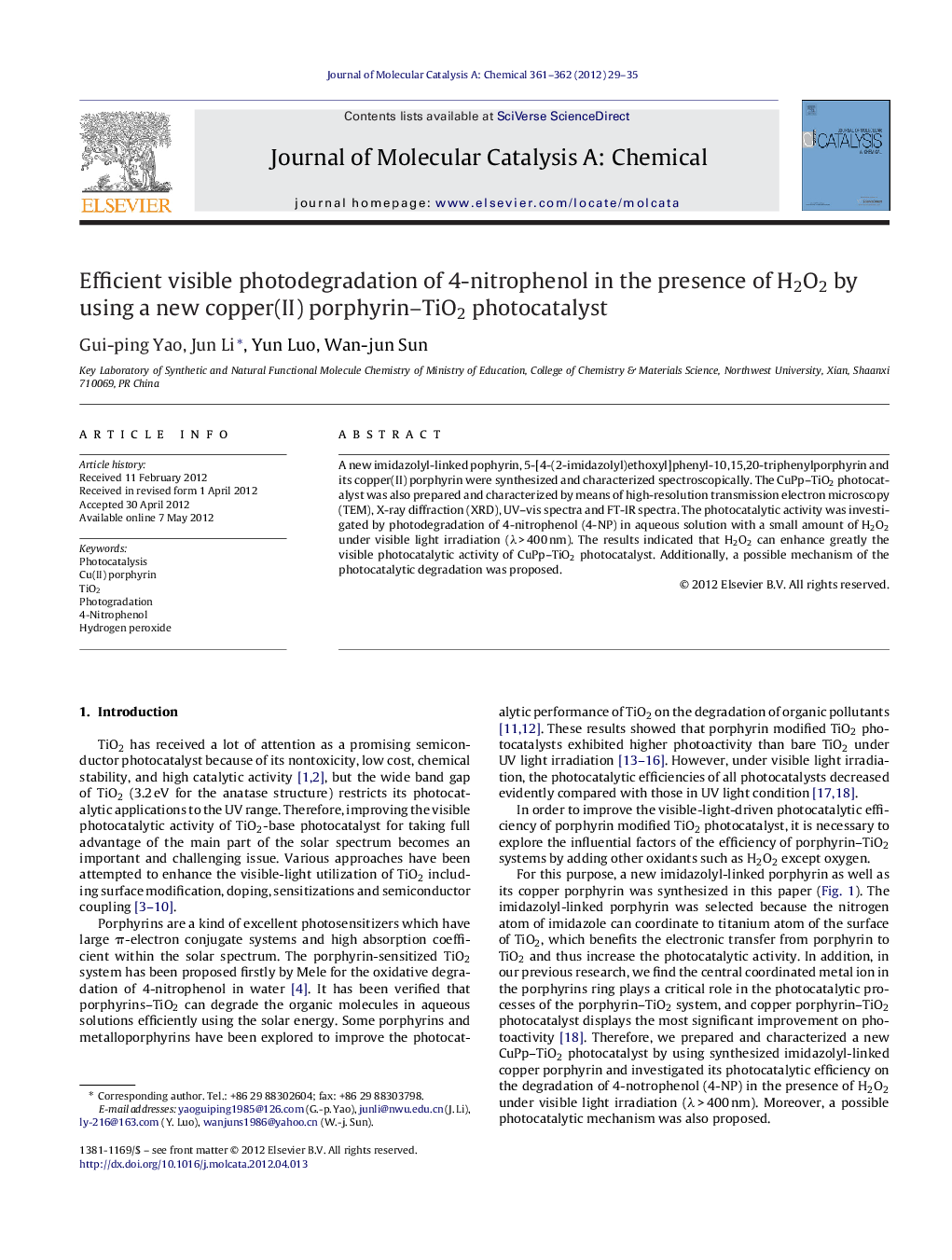| Article ID | Journal | Published Year | Pages | File Type |
|---|---|---|---|---|
| 66103 | Journal of Molecular Catalysis A: Chemical | 2012 | 7 Pages |
A new imidazolyl-linked pophyrin, 5-[4-(2-imidazolyl)ethoxyl]phenyl-10,15,20-triphenylporphyrin and its copper(II) porphyrin were synthesized and characterized spectroscopically. The CuPp–TiO2 photocatalyst was also prepared and characterized by means of high-resolution transmission electron microscopy (TEM), X-ray diffraction (XRD), UV–vis spectra and FT-IR spectra. The photocatalytic activity was investigated by photodegradation of 4-nitrophenol (4-NP) in aqueous solution with a small amount of H2O2 under visible light irradiation (λ > 400 nm). The results indicated that H2O2 can enhance greatly the visible photocatalytic activity of CuPp–TiO2 photocatalyst. Additionally, a possible mechanism of the photocatalytic degradation was proposed.
Graphical abstractA new imidazolyl-linked pophyrin, 5-[4-(2-imidazolyl)ethoxyl]phenyl-10,15,20-triphenylporphyrin, and its copper(II) porphyrin were synthesized and characterized spectroscopically. The CuPp–TiO2 photocatalyst was also prepared and characterized. The photocatalytic activity was investigated by photodegradation of 4-nitrophenol (4-NP) in aqueous solution with a small amount of H2O2 under visible light irradiation. The results indicated that H2O2 can enhance greatly the visible photocatalytic activity of CuPp–TiO2 photocatalyst. Additionally, a possible mechanism of the photocatalytic degradation was proposed.Figure optionsDownload full-size imageDownload high-quality image (154 K)Download as PowerPoint slideHighlights► A novel CuPp–TiO2 photocatalyst was prepared and characterized. ► The CuPp–TiO2 exhibited highly visible photocatalytic efficiency with H2O2. ► The possible photocatalytic mechanism was proposed.
